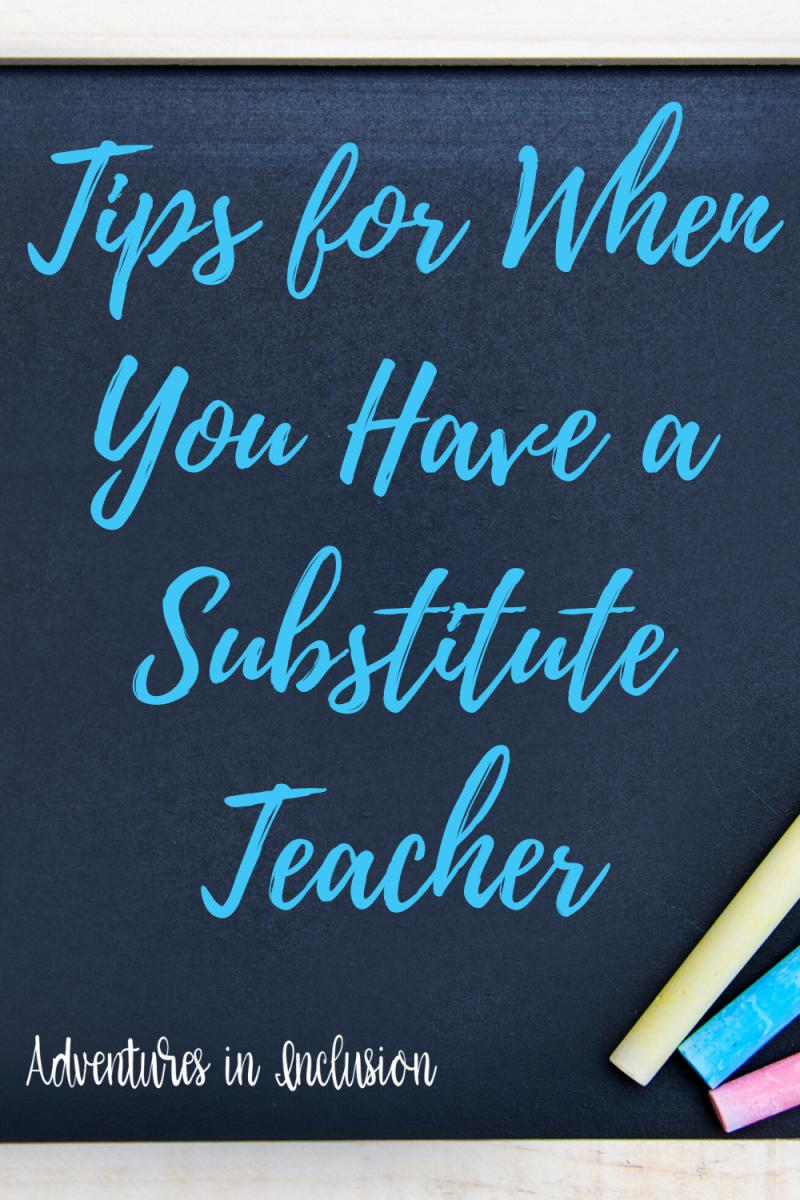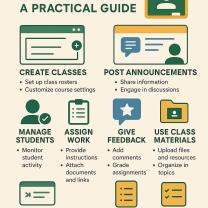What to do when you have a substitute teacher?
Navigating substitute teacher scenarios can be a challenge for both students and substitute teachers. Here are some essential tips for both students and substitute teachers to make the experience more positive and productive:
For Students:
Be Respectful: Treat the substitute teacher with the same respect you would your regular teacher. Remember that they are there to help you learn.
Follow Instructions: Listen carefully to the substitute's instructions and follow them closely. This helps maintain a smooth learning environment.
Help the Substitute: If the substitute needs assistance with routines, procedures, or class materials, be helpful and provide information about how things are typically done.
Stay on Task: Keep focused on your work and avoid disruptive behavior. This ensures a productive learning environment for everyone.
Use Quiet Voices: Maintain a quiet and calm classroom atmosphere. This allows the substitute teacher to manage the class more effectively.
Ask Questions Appropriately: If you have questions about the assignment or any instructions, ask politely and at an appropriate time. Avoid disrupting the class unnecessarily.
Show Kindness: Make the substitute teacher feel welcome. A positive and friendly environment makes the day more enjoyable for everyone.
For Substitute Teachers:
Arrive Early: Get to the classroom early to familiarize yourself with the lesson plans, seating arrangements, and any other important information.
Introduce Yourself: Start the day by introducing yourself and explaining your expectations. Provide clear instructions for the day's activities.
Be Firm but Fair: Establish and maintain a positive but firm presence in the classroom. Enforce rules consistently and fairly.
Follow Lesson Plans: If the regular teacher has left lesson plans, follow them as closely as possible. If there are no plans, be prepared with engaging and educational activities.
Use Classroom Management Techniques: Employ effective classroom management techniques to address any behavioral issues promptly and maintain a positive learning environment.
Build Rapport: Try to connect with students and build rapport by learning their names and showing genuine interest in their work.
Leave Feedback: Provide feedback to the regular teacher about how the day went, any challenges encountered, and how well the students engaged with the material.
Remember, flexibility and clear communication are key in substitute teacher scenarios. Both students and substitute teachers contribute to a positive and successful learning environment.
Guidelines for managing a classroom when there's a substitute teacher
Managing a classroom with a substitute teacher can be tricky, but with the right approach, it can be a smooth and productive day for everyone. Here are some key guidelines to follow:
Before the Day Starts:
- Communicate with the regular teacher: Leave detailed lesson plans, classroom routines, and behavior management strategies. Inform them of any important events or issues happening in the class.
- Prepare the classroom: Set up the room as usual, with materials readily available for the substitute. Leave a welcome note and any necessary information on the board.
Setting the Tone:
- Be confident and assertive: Greet students at the door and introduce yourself. Establish your authority from the beginning, using a friendly but firm tone.
- Review classroom rules and expectations: Briefly go over the classroom rules and routines, reminding students of expected behavior.
Maintaining Engagement:
- Be clear and concise with instructions: Explain activities and tasks clearly, ensuring everyone understands what they need to do.
- Vary your teaching methods: Use a mix of activities, such as lectures, discussions, group work, and individual tasks, to keep students engaged.
- Be positive and encouraging: Praise students for good behavior and effort. Offer help when needed, but encourage them to solve problems independently.
Addressing Misbehavior:
- Redirect early: If you see a student starting to misbehave, address it immediately but calmly. Redirect their attention to the task at hand or give them a different job to do.
- Use positive reinforcement: Focus on rewarding good behavior rather than punishing bad behavior. Give shout-outs, stickers, or other incentives for following the rules.
- Seek help if needed: If you're dealing with a serious behavior problem, don't hesitate to seek help from the school office or another teacher.
Additional Tips:
- Get to know the students: Take some time to learn their names and interests. This will help build rapport and make the day more enjoyable for everyone.
- Be flexible: Things might not go exactly as planned, so be prepared to adjust your schedule or activities as needed.
- Have fun: Show your enthusiasm for the subject matter and create a positive learning environment.
By following these guidelines, you can help ensure that your classroom runs smoothly and productively even when there's a substitute teacher. Remember, communication, clear expectations, and positive reinforcement are key to a successful day.
I hope this helps!











